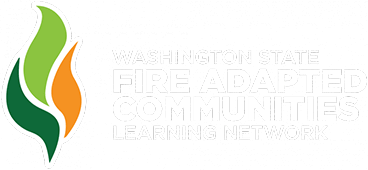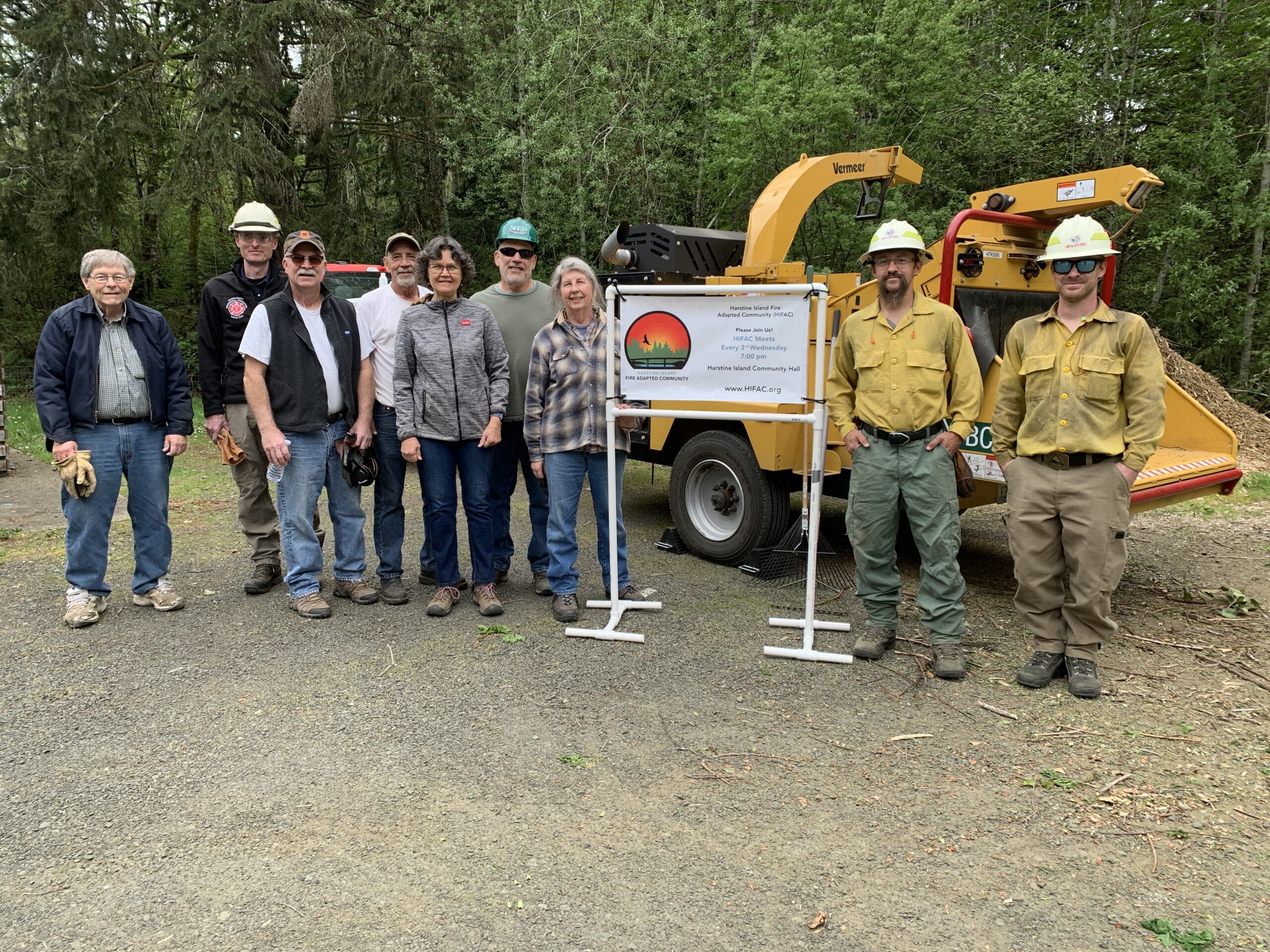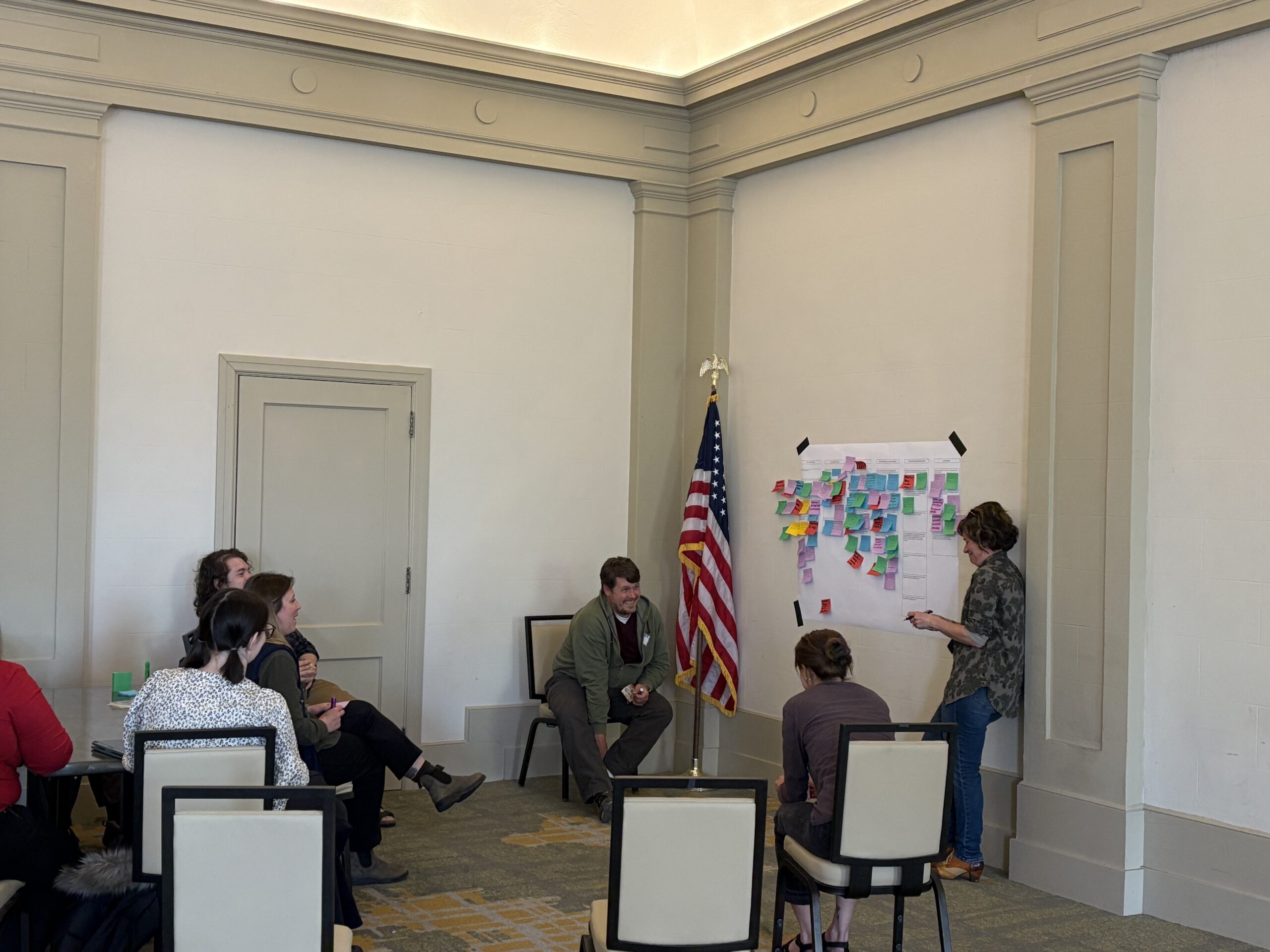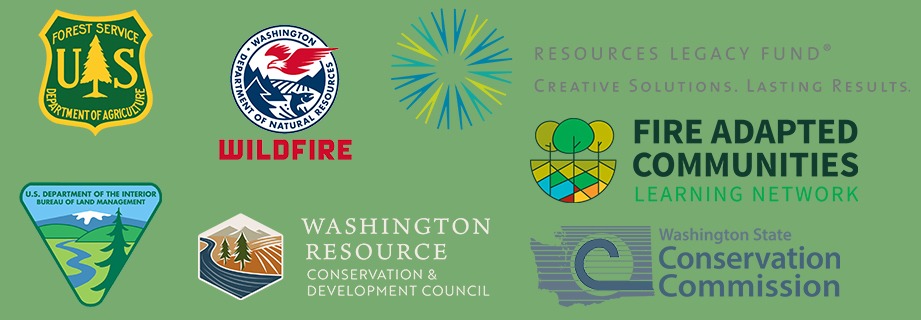We sat down with Joe Hill, Forest and Community Resilience Specialist with Cascadia Conservation District, and Colin Sternagel, private landowner, to learn about their recent work in developing local community burning programs.
How did you get involved in prescribed fire?
Colin: I came to it without any fire background or history, just as a landowner wanting to use fire as a management tool and to be able to burn on my land.
Over the last couple of years, I’ve been learning about Indigenous fire practices and the natural frequency of fire in our local area watersheds outside of Leavenworth, WA. From this research, I recognized that for the long-term management of my land, mechanical fuel reduction treatments alone are not economically sustainable, and ecologically, the forests need fire. Integrating fire back into this landscape is an opportunity for me to care for my land in a different way.
Last year, I was invited to go to California to attend a Prescribed Burning Association (PBA) Learning Exchange. During this exchange, we learned about partnerships and resources private landowners use to coordinate prescribed burning on their lands. The PBA stood out as an effective model for coordinating and implementing prescribed burns on private lands.
Agencies are set up to manage land on a large scale; however, resources for small burns on private lands are limited. Grassroots efforts are needed to build capacity and a pathway for prescribed burning on private lands. Community-led burning efforts can create opportunities for residents to access a new tool to manage their lands.
Joe: I went to school for forestry and wildfire management and have been a wildland firefighter for the last decade before accepting a position at Cascadia CD. I always knew that the reactionary/suppression mindset is not the only option for restoring forests or community protection. In my position with Cascadia CD, I work with landowners on fuel reduction and forest stewardship projects. Our community is rated as the most at-risk for wildfire-to-home transmissions in Washington State – so having prescribed fire as a tool in the toolbox makes sense.
We are working to shift the fire narrative. Seeing the outcomes of good fire and how fire benefits the landscape can help our communities embrace more prescribed burning.

You both mentioned that you work with residents. Are you seeing the acceptance of prescribed fire in your work?
Joe: I interact with landowners on almost a daily basis. Most people are requesting a consultation because they are worried about fire. I start the conversation by recommending mechanical treatments as the first entry. As I continue to work with them, I encourage them to learn more about prescribed fire. I am pleasantly surprised that 50-75% of the people I talk to are interested in prescribed fire. This is great– many people recognize its importance and can see the benefits.
Colin: Smaller, community-led burns provide more direct education for landowners and individuals participating in the burns. Seeing the organization, professionalism, and experience of those leading community burns (often former agency folks), and how various organizations collaboratively plan and implement a burn is helping to build trust and understanding of the process and considerations for safety before fire is put on the ground.
Our outreach efforts have also yielded more interest. We now have 170 people on our email distribution list – and when I am in the community, people are saying: “Hey I’m getting the emails, it’s really cool to see it happening!” Those 170 people are connected to many different social circles and can share information about our efforts throughout the community.
What are some of the challenges you have experienced in working with landowners on prescribed burns?
Joe: Liability. Landowners have a lot of concerns about liability. We have had landowners ready to burn but then back out.
Colin: As Joe said, liability.

What are your biggest accomplishments so far for your community prescribed burning efforts?
Colin: Completing the first burn felt like a massive accomplishment, a proof of concept. There was a lot of collaboration between different agencies: Cascadia CD, the Department of Natural Resources, The Nature Conservancy, a local fire district, and 20+ community members of all ages. It was pretty amazing that it actually happened!
Joe: As Colin said, the first burn was a huge accomplishment. That first burn was 1/2 acre (a drop in the bucket regarding acres treated), and also monumental. This was the first burn hosted and completed by a PBA in the community and the state. Providing an opportunity for the community to participate in the process is inspiring. One participant was a landowner who I have been helping plan mechanical fuel reduction treatments. He is now interested in prescribed burning after he completes the initial vegetation removal project.
What are your next steps in developing your community burning program?
Colin: During the PBA learning exchange, we learned that a lot of PBAs are supported by conservation districts. For a few years, I foresee the conservation district serving as the backbone for supporting PBAs and working to get landowners interested in prescribed fire every spring and fall. I would love to see PBAs expand. There is also a lot changing right now, with increased investments at the federal level and opportunities for non-National Wildfire Coordinating Group qualified participants to attend TREX events. My hope is that all of this will lead to more cross-boundary burning across the landscape.
Joe: If we coordinate with 170 enthusiastic people to build their capacity through training and learning opportunities, we can expand those acres and implement more complex burns. I think that’s what Colin is talking about with cross-boundary burning: if there are more private landowners who are ready for prescribed fire or implementing prescribed fire, it will be easier for neighboring landowners who are burning, such as the Forest Service, to connect forest restoration and community protection treatments across the landscape.
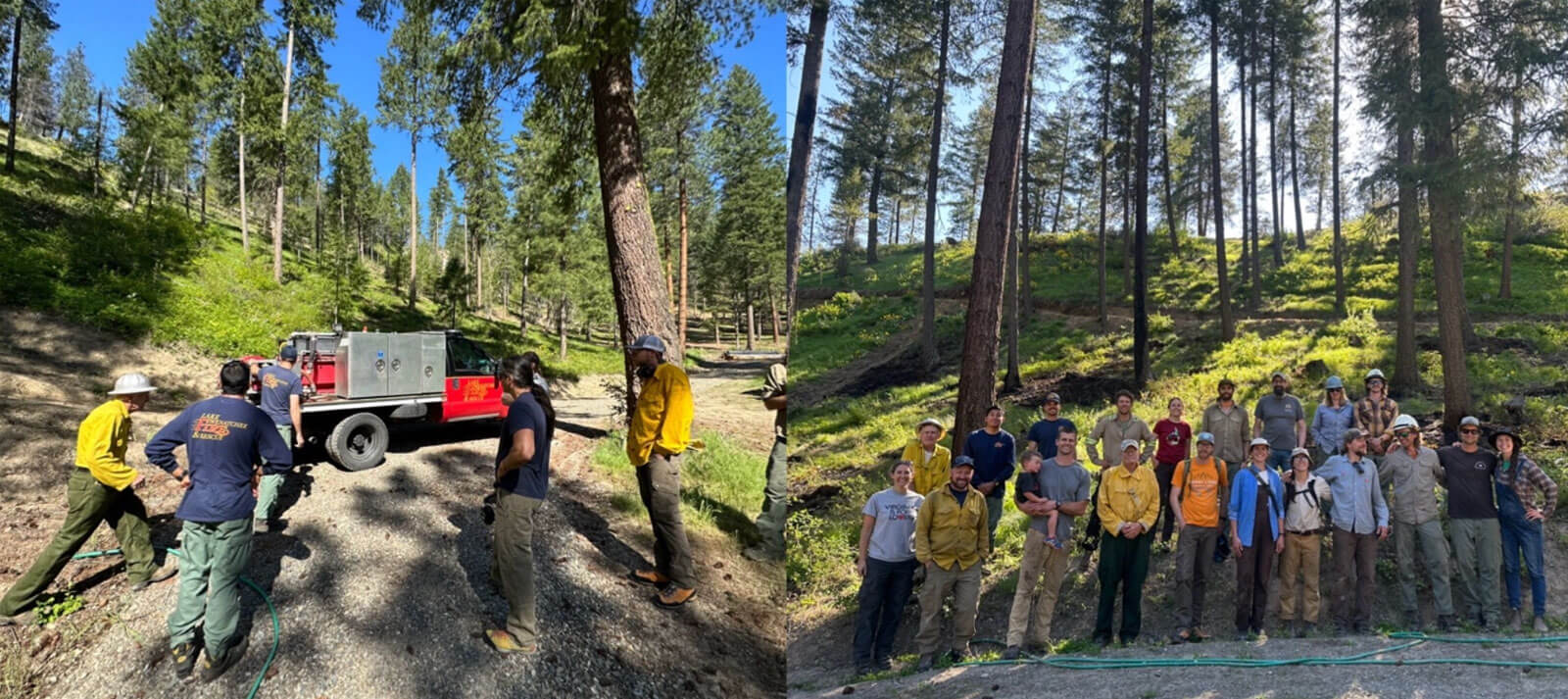
How did others inform your process of creating a community burn program?
Colin: During the PBA Learning Exchange, one participant stated: “follow the stoke”. Don’t worry about the people who aren’t interested or are doubting prescribed fire, support those landowners who are willing and ready. It makes so much sense, and it’s true – you don’t need a lot of people; you only need one landowner who is “stoked”. From there, invite others burns to participate. You don’t have to spend a lot of energy defending prescribed fire, if people are interested, they will show up and their actions will speak for themselves.
Joe: One of the big things that came to me from PBA Learning Exchange was to communicate openly and honestly with landowners. Put all the cards on the deck. Yes, there is liability associated with prescribed burning. Yes, there is a risk. AND talk through the specific actions that can be taken to reduce risk and liability.
Colin, myself, and plenty of others see these landscapes and all the work that needs to be done. That is a big order: we need 10s, 100s, 1000s of acres burned annually. But when working with a landowner about burning half an acre, talking about scale is important. We had to change our narrative about scale to get that foothold in the community to initiate this work. As we continue to build momentum, we can talk about scaling up. My big takeaways are to have open, honest conversations with landowners and not pass up on small wins.
What would you share with others starting their own community burn programs?
Colin: Follow the stoke. Even when it comes to working with agencies. Agencies are made up of individuals, and there will be individuals in those agencies who are opposed and others who are advocates.
Ask how we can make your “no” a “yes”. I don’t take “no” anymore. I try to understand “why?” or “how?” we can make this work, what is needed to make people feel comfortable, and what additional information is needed to help alleviate their concerns.
Joe: Meet the community and landowner where they are. It’s about getting community exposure to fire one way or the other. Utilize more common practices, such as pile burning to provide exposure to safe burning practices. Teach people how to safely and effectively construct and burn piles while preparing their landscape for the potential for underburning. Follow the interest and build upon that interest.
Have a contingency plan. We were very close to offering a pile burning workshop for our ‘learn and burn’ event. Fortunately, a landowner volunteered to have their property burned a couple of weeks before the planned ignition date.
For those just starting, any progress is good progress. We are working to change a culture based on the fear of wildfire. By using prescribed fire, I believe we can help integrate safe fire into our culture, starting at a grassroots level.
We sincerely thank Joe and Colin for their insights into community burning and PBAs! To learn more about Cascadia Conservation District, visit their website at www.cascadiacd.org.
